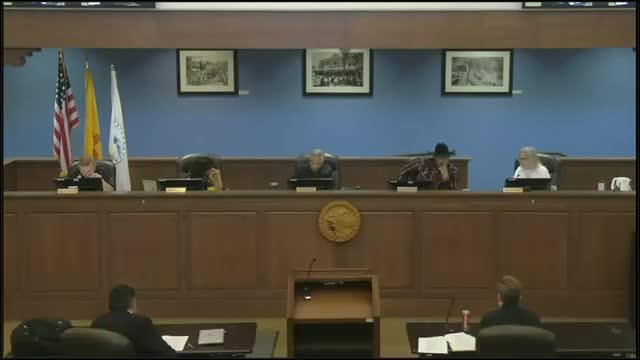Experts warn of climate impacts on Northern New Mexico infrastructure
September 04, 2024 | Taos City, Taos County, New Mexico
This article was created by AI summarizing key points discussed. AI makes mistakes, so for full details and context, please refer to the video of the full meeting. Please report any errors so we can fix them. Report an error »

During a recent board meeting in Santa Fe on August 22nd, attendees were captivated by a presentation from the South Central Climate Adaptation Science Center, based at the University of Oklahoma. The focus of the discussion was on climate adaptation strategies tailored specifically for Northern New Mexico, rather than traditional mitigation efforts like transitioning to renewable energy sources.
The presentation highlighted significant projected changes in climate patterns for the region over the next few decades. Key findings included an expected increase in heat waves—by two to four additional events by mid-century—and a rise in daily high temperatures by 3.5 to 5 degrees Fahrenheit. Furthermore, the number of days exceeding 100 degrees is anticipated to increase by approximately ten each year.
The scientists also noted that while average annual precipitation may rise, the frequency of rainy days is expected to decline, leading to more intense precipitation events. This shift could exacerbate issues such as flooding and landslides, which have already been observed in recent weeks. Additionally, the length of dry spells is projected to extend, and freeze-thaw cycles may decrease by up to 35 days annually, impacting agriculture and water management.
The implications of these changes are profound, prompting discussions among local government officials about necessary adjustments in infrastructure planning, emergency management, and building codes. Participants expressed a strong desire for further data, particularly concerning snowmelt and snowfall patterns, to better prepare their communities for the anticipated climate challenges.
The meeting underscored the urgency for proactive measures to ensure the safety and resilience of Northern New Mexico's infrastructure and communities in the face of climate change. The board plans to follow up with the scientists for more detailed information and to explore collaborative opportunities for adaptation strategies.
The presentation highlighted significant projected changes in climate patterns for the region over the next few decades. Key findings included an expected increase in heat waves—by two to four additional events by mid-century—and a rise in daily high temperatures by 3.5 to 5 degrees Fahrenheit. Furthermore, the number of days exceeding 100 degrees is anticipated to increase by approximately ten each year.
The scientists also noted that while average annual precipitation may rise, the frequency of rainy days is expected to decline, leading to more intense precipitation events. This shift could exacerbate issues such as flooding and landslides, which have already been observed in recent weeks. Additionally, the length of dry spells is projected to extend, and freeze-thaw cycles may decrease by up to 35 days annually, impacting agriculture and water management.
The implications of these changes are profound, prompting discussions among local government officials about necessary adjustments in infrastructure planning, emergency management, and building codes. Participants expressed a strong desire for further data, particularly concerning snowmelt and snowfall patterns, to better prepare their communities for the anticipated climate challenges.
The meeting underscored the urgency for proactive measures to ensure the safety and resilience of Northern New Mexico's infrastructure and communities in the face of climate change. The board plans to follow up with the scientists for more detailed information and to explore collaborative opportunities for adaptation strategies.
View full meeting
This article is based on a recent meeting—watch the full video and explore the complete transcript for deeper insights into the discussion.
View full meeting
